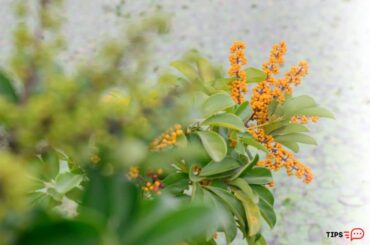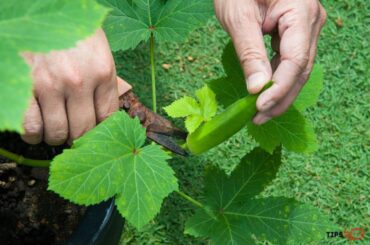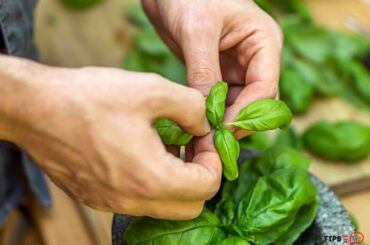If you’re here to learn how to prepare Homemade Fertilizer for Ferns, yes, this article is for you. Adding a touch of green to your living space would be a great way to make the environment fresh and calm. With their delicate foliage, of course, ferns are an ideal option for your home décor.
Ferns are not fastidious plants, so they are relatively easy to care for. Interestingly, you can satisfy their nutritional requirements with a couple of ingredients that are readily available in your home.

What are Homemade Fertilizer for Ferns?
Natural fertilizers include different plant-derived and/or animal-derived materials. Instead of synthetic chemicals, you can use natural feeds for your ferns as they can nourish both the plant and the soil.
Ferns love to grow in soil that is rich in organic matter. On the other hand, with natural fertilizers, you can fulfill the nutritional requirements of your ferns, preferably at a low cost.
Upon biodegradation, natural fertilizers gradually release their nutrient content into the soil that the ferns can absorb. As a matter of fact, natural fertilizers serve as slow-release fertilizers.
In the soil, there are some microbes that the plants benefit from. They are potent for boosting your plants’ health. While they break down large and complex organic compounds into simple nutrient elements that the plant can easily take up, they also fight harmful microbes to keep them away from your plants.
When it comes to inorganic fertilizers, their salts have the potential to get accumulated in the soil, so there can be toxic effects on the plants and the soil microflora.
Thankfully, ferns do not crave much fertilization, so it will be easy for you to feed your ferns with simple household ingredients you already have. Here we have listed some natural ingredients that help you nourish your ferns.
01. Banana peels
Banana peels are well-recognized among gardeners due to their rich nutrient profile. They are the richest source of potassium (K). It says that banana peels contain 42% potassium. Next time, don’t put your banana peels into the garbage bins. Instead, you can use them to do a better job for your ferns.
Potassium is considered a vital macronutrient element required for plant growth and development. It helps move nutrients and water between the cells. Furthermore, it strengthens the fern stems and protects your ferns from diseases.
Banana peels can be used in several ways to feed the ferns. Either you can use them as cut banana peels or as banana peel brew.
Cut banana peels into smaller pieces and bury them in the soil of your fern pot. Avoid using larger chunks of banana peels as it may take a longer time to release nutrients. It is preferable if the peels can be cut into 1-1/2 inch pieces.
To prepare banana peel tea, chop the peels and add them to a glass jar and fill it with water. The efficiency of leaching nutrients into the water increases with smaller pieces of banana peels. Keep it in a sunny area for a week or two. With time, nutrients in the peels move to the water, and you can use this nutrient-rich water to spray your ferns.
02. Coffee
The use of coffee as a fertilizer for your ferns conveys several benefits. Along with adding nitrogen to the soil coffee also improves aeration, good drainage, and water retention.
If you use coffee for your outdoor ferns, they can attract earthworms, which can improve the quality of the soil. Well, you can apply coffee as coffee ground or coffee brew to fertilize your ferns.
Be mindful that coffee best matches with acid-loving plants. The pH of the soil is dramatically reduced by fresh coffee. However, if you use the leftover of your morning cup of coffee for ferns it won’t reduce the soil pH level that much. When you wash the coffee once, it will not lower the acidity of your soil significantly.
Depending on the fern species you have, it would be better if you could dilute the fresh coffee. For example, flowering ferns and sword ferns prefer lower pH levels (pH around 5.0 – 5.5), cinnamon ferns require moderately acidic soil (pH around 5.5 – 6.5), and fern species like dragger ferns, holly ferns prefer moderately alkaline soil (pH around 5.6 – 7.8).

03. Eggshells
Eggshells are also beneficial to improving the soil. In fact, they are the most convenient source to enrich your soil with calcium and potassium, which contribute to strengthening the root system of your ferns to grow faster.
If you’re going to use eggshells for your ferns, make sure to wash and dry them first.Then simply crush the eggshells into a fine powder.
Usually, it will take much time to release the minerals and nutrients into the soil if you use large flakes of eggshells. So, the most effective way to fertilize the soil with eggshells is to use them as crushed flakes or better yet, as powder.
You can use the coffee grinder or mortar and pestle to powder eggshells. Baking the shells at 350 degrees until they turn to a light brown color makes grinding them easier.
Simply dig a small hole closer to the plant and add a few teaspoons of eggshell powder, then cover with soil. If not, you can mix a handful of powdered eggshells with the soil to be used for your ferns.
Alternatively, same as you do for banana peels, you can prepare eggshell tea. Put some ground eggshells in a pot and add a sufficient amount of water. Boil the mixture for a few minutes and then let it cool.
During this process, nutrient elements of the shells are leached into the water. Once it has cooled, strain the water into a clean jar. Close the lid and keep it in a shaded area for one night. You can use this eggshell tea for your ferns to support their growth.
04. Grass clippings
This is a good source of nutrients, especially for nitrogen, phosphorus, and potassium. So, don’t waste your grass clippings next time you mow the lawn. You can use them to prepare compost or fertilizer tea to use on your ferns.
Making fertilizer tea is not a tricky task. Put your grass clippings into a bucket and cover half of it with water. Rather than using tap water, try to use rainwater for the maximum benefits. Allow the mixture to stand for one to two weeks. Don’t forget to stir the mixture daily. Filter the mixture and get the liquid part to apply to your ferns.
05. Tea
Tea contains nitrogen, phosphorus, and potassium that can promote plant growth. Nitrogen encourages healthy leaf growth, which is crucial for plants like ferns, as most ferns are grown for their amazing foliage.
Similar to coffee, tea can also adjust the pH of the soil around your ferns. Again, check the pH of the soil to ensure it is compatible with the fern species you are growing. You can use drained tea leaves for your ferns that prefer alkaline soil to grow.
For ferns, you can mix the tea leaves with soil so, with time, they will decompose, releasing nutrients into the soil. Alternatively, you can brew some tea leaves and spray the liquid on your ferns.
Keep in mind that sugar and milk can promote the growth of detrimental bacteria and fungi. Perhaps they can harm your plants. Thus, avoid using tea that has been mixed with sugar and milk.
06. Vinegar
Vinegar is another input to uplift the acidity of your soil. So, you can apply vinegar to ferns, which prefer higher levels of acidic soil. Apart from increasing the acidity, vinegar helps you expel ants away from your ferns. Furthermore, it helps to discourage weed growth.
However, vinegar can significantly reduce the pH level of the soil, so you should not use it frequently for the ferns. Do not pour vinegar directly onto the soil. Make sure to dilute it with a few cups of water before using it for the ferns.
What is the best fertilizer for ferns?
Obviously, ferns will benefit greatly from compost. It provides diverse nutrient elements, including macronutrients as well as micronutrients, which are essential for ferns to grow healthy. You can vary the nutrient content of your compost depending on the materials you used to make it.
Nitrogen (N), phosphorus (P), and potassium (K) are the most crucial elements for plants to stay alive. These are the elements that are mentioned in chemical fertilizer products as the NPK ratio.
Nitrogen is useful for leaf growth, whilst phosphorus and potassium strengthen the roots of ferns. All these three elements are readily available in compost.
Other than improving soil fertility, compost plays a significant role in favoring the growth of beneficial soil microbes, promoting soil conditioning, and increasing the humus content of the soil. You can save your wallet if you use compost to feed your ferns, as it cuts down on expenses on chemical fertilizers.

Homemade Fertilizers to Avoid for Ferns
Homemade fertilizers comprise natural ingredients that are safe to use for ferns. The right doses of these natural ingredients at the right time won’t impose any threats on ferns. However, it is important to have some idea about the effects of different ingredients that you wish to use for your ferns.
For example, acidity-adding substances such as coffee, vinegar, and tea might be harmful if you overuse them. If you consistently use them in higher doses, they will reduce the pH of the soil.
If this happens, ferns may have difficulty absorbing nutrients, causing nutrient deficiencies. As a result, the ferns will turn their leaves yellow and stunt their growth.
How often should you fertilize your ferns with homemade fertilizer?
You can make homemade fertilizers 100% organic. Since they easily decompose with time, natural fertilizers are very unlikely to harm your ferns.
However, you have to be careful if you use chemical fertilizers for the ferns. Too many chemicals for ferns can possibly burn them. So, never apply heavy loads of fertilizer. Indeed, it is ideal to use the lowest rate of the recommended rate on the label.
The fertilizer requirements of indoor ferns are quite different from those outdoors. Usually, garden ferns can thrive with decaying plant materials. This does not mean that you should never feed them with a proper diet. If you wish, you can apply a compost mulch or you can mix compost into the soil in the spring to feed your ferns.
Alternatively, the application of slow-release balanced fertilizer (ex. 10-10-10) in the spring is also possible. You can fertilize container ferns twice in the year, ideally in the spring and midsummer.
Keep in mind that if you’ve used compost for the ferns, you’re not supposed to apply a lot of fertilizer. If the tips of the leaves appear brown or have died, it warns you that you were over-fertilizing. In such a scenario, you can flush the excess fertilizer away with excess water.
Do ferns like Miracle-Gro?
Yes, ferns can be energized with Miracle-Gro. Anyway, it is important to follow the directions on the label. When you’re going to plant ferns, you can use Miracle-Gro All-Purpose Garden Soil for garden ferns or Miracle-Gro Potting Mix for container ferns.
To feed Indoor ferns, you can use Miracle-Gro Indoor Plant Foods and Miracle-Gro Shake ’N Feed All Purpose Plant Food to feed outdoor ferns.
How do I make my ferns healthy?
Follow these simple tips to keep your ferns happy and healthy.
Light:
For both indoor and outdoor ferns, provide a wet and shady environment. Avoid exposing them to the sun’s direct rays. Ferns can’t stand direct sunlight. They can be burnt and dehydrated when exposed to direct sunlight.
Soil and pH:
Soil should be well-draining but not dry out quickly. In general, ferns thrive well in soil with a pH of 4 to 7. The level of acidity that promotes optimal plant growth varies per fern species. You can use a pH meter to assess the pH level of the soil in your landscape area if you’re not sure. You can buy a home and garden-grade pH meters from any online shopping platform from a local garden center.
Watering:
Ferns prefer damp soil over soggy soil for rooting. Too much water is harmful to the ferns. Serious health issues like root rot cannot be avoidable with excess water. Thus, do not overwater your ferns. Water the ferns when the soil is partially dry.
Fertilizers:
Ferns can thrive in soil rich in organic matter. In such situations, their demand for fertilizers is very low. Avoid excessive levels of chemical fertilizers for the ferns. Whenever you use chemical fertilizers, always go with the lowest rate suggested by the manufacturer. Apply fertilizers sparingly in spring once you notice new growth in the plant. Do not apply fertilizers in the fall.

Related questions
Do coffee grounds help ferns?
Coffee, for sure, helps ferns to grow healthy. As mentioned earlier, coffee can enrich the soil with nitrogen and maintain the acid level. You can use coffee grounds for ferns in two ways. Either you can sprinkle a thin layer of the coffee ground onto the soil, or you can dilute them with water and spray your ferns.
What does Epsom salt do for ferns?
Epsom salt or magnesium salt, is composed of magnesium, sulfur, and oxygen which are vital elements for boosting chlorophyll production, fighting against diseases, and healthy plant growth. You can use Epsom salt for your ferns to grow them healthy, lush, and green. Mix 1 teaspoon of Epsom salt with 1 liter of water to spray your ferns once a month.
Final thoughts
Now you know a lot about Homemade Fertilizer for Ferns. You can use banana peels, coffee, egg shells, grass clippings and vinegar as home made fertilizers. Also you have to provide other requirements such as sunlight, water and good soil for the healthy growth of ferns.
Read Next : Does Dragon Fruit Have Caffeine? (May Be Not)




